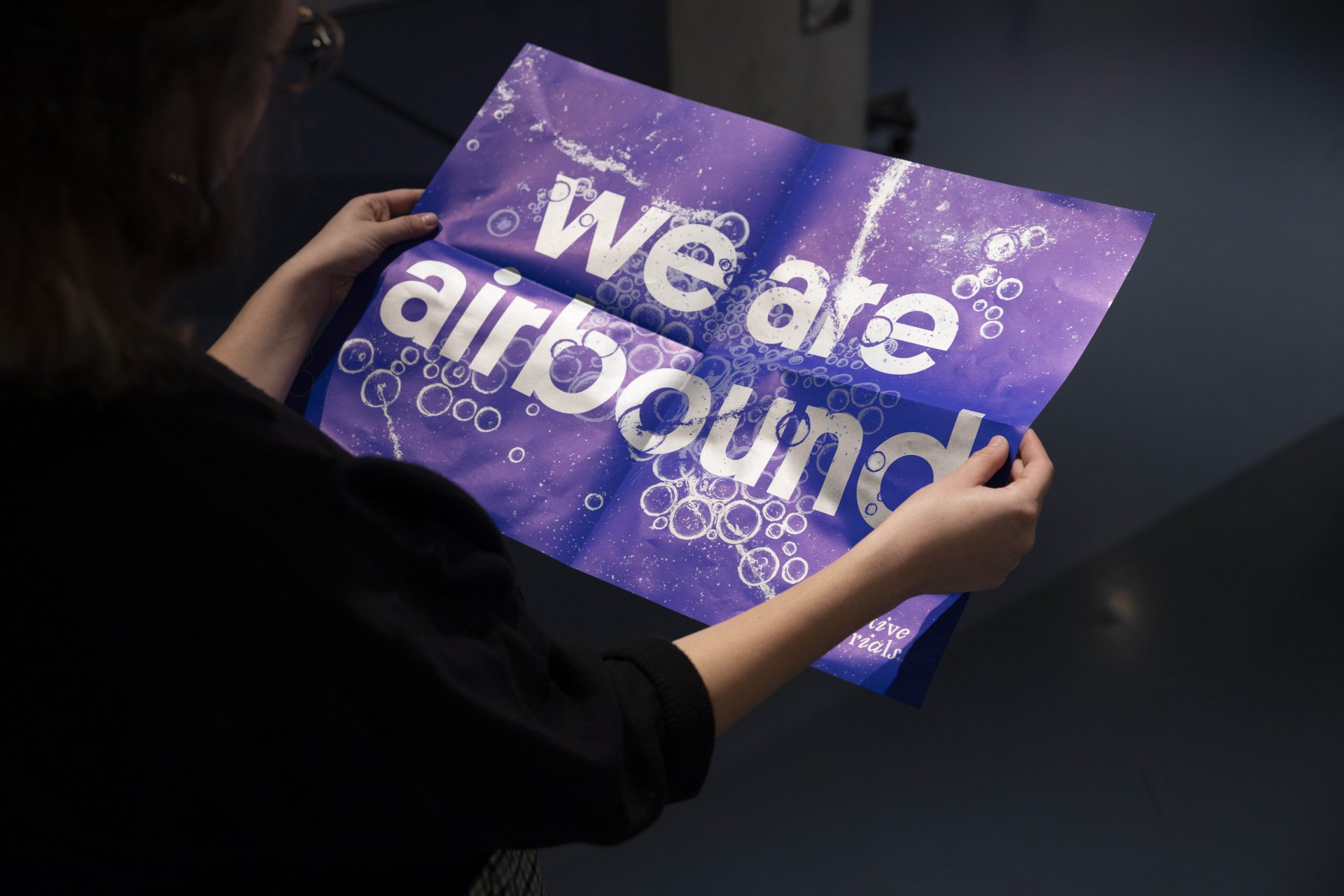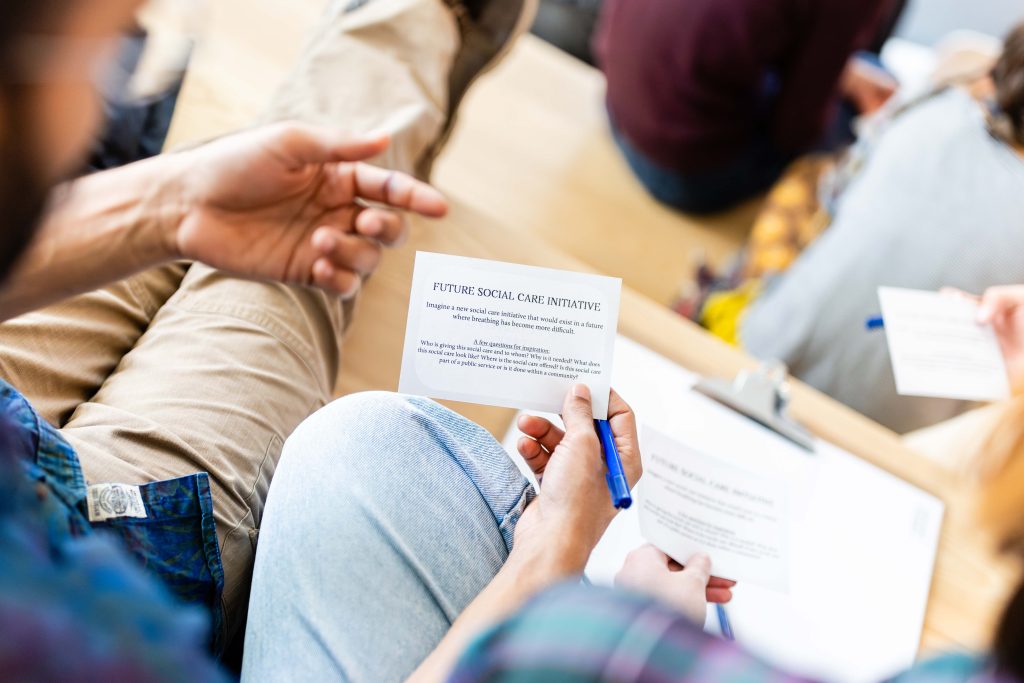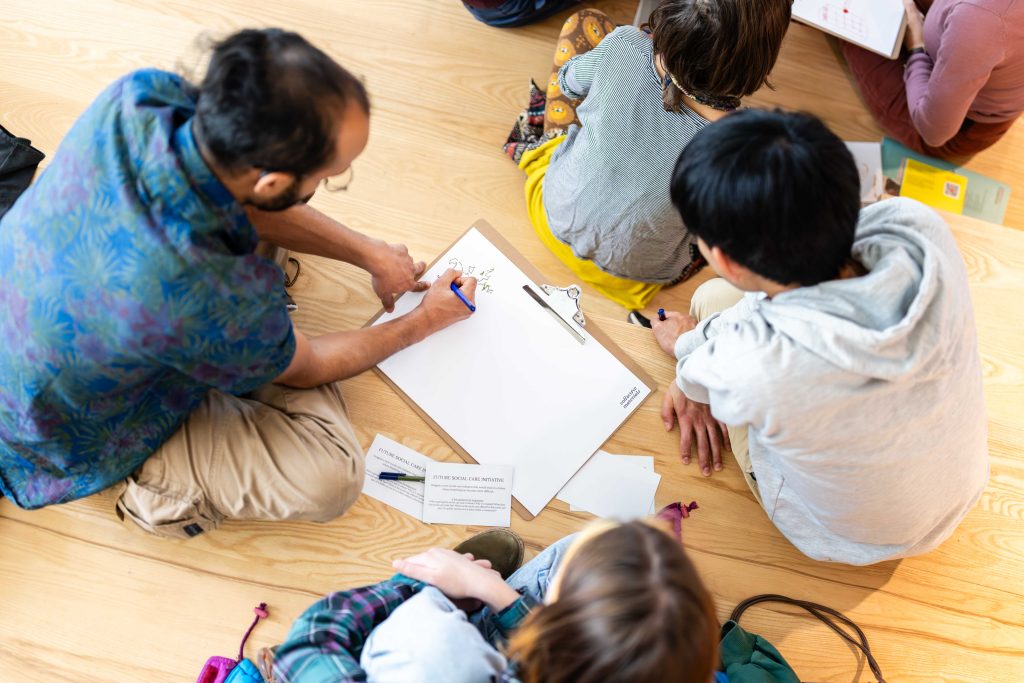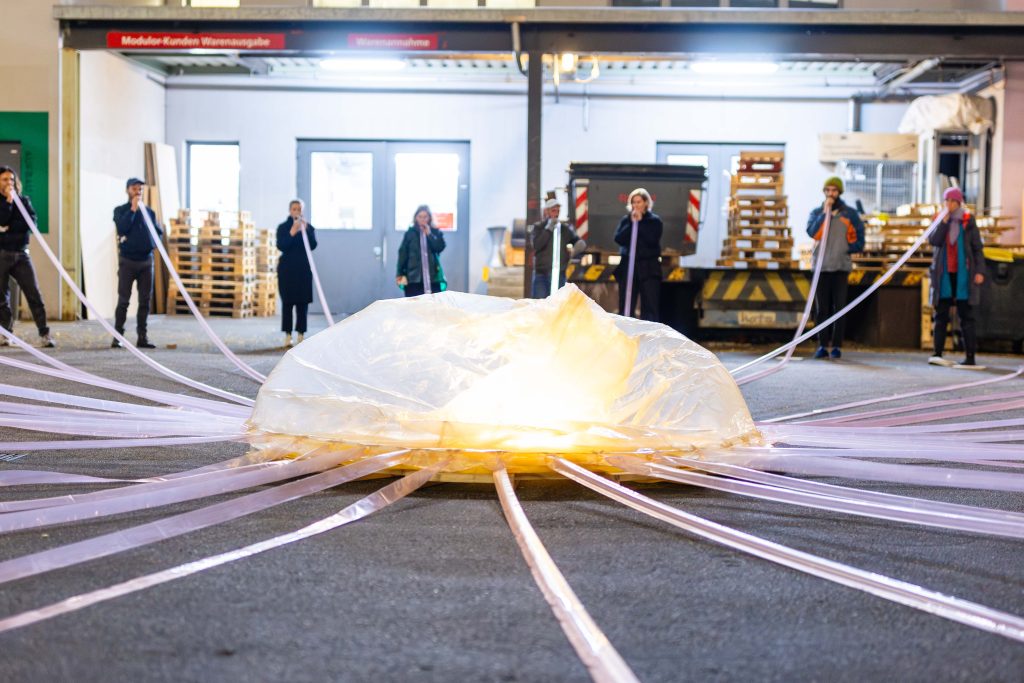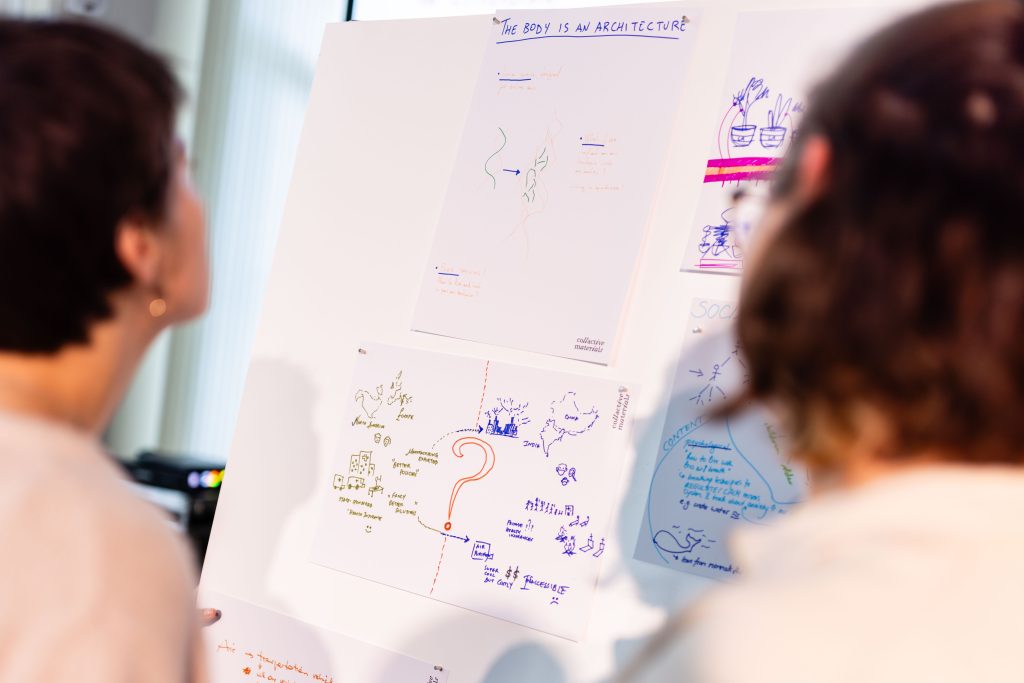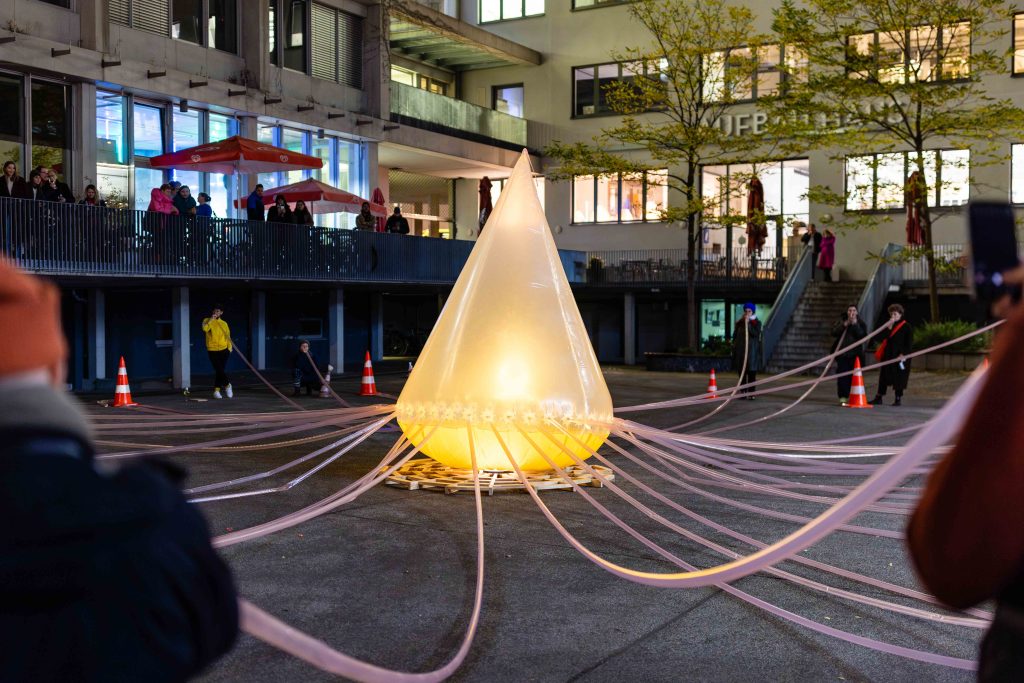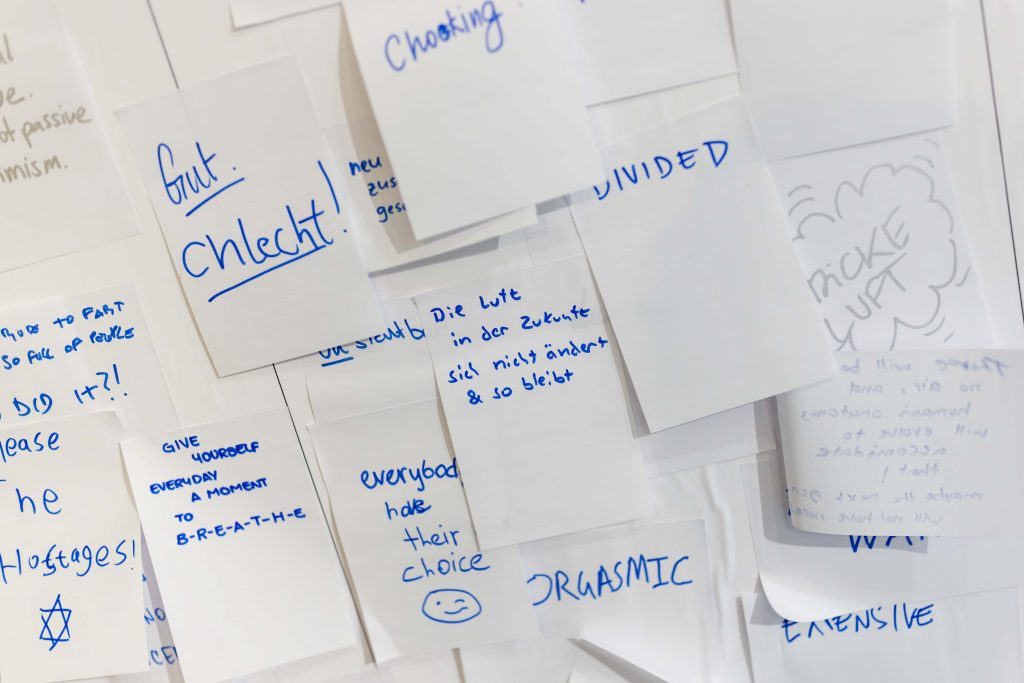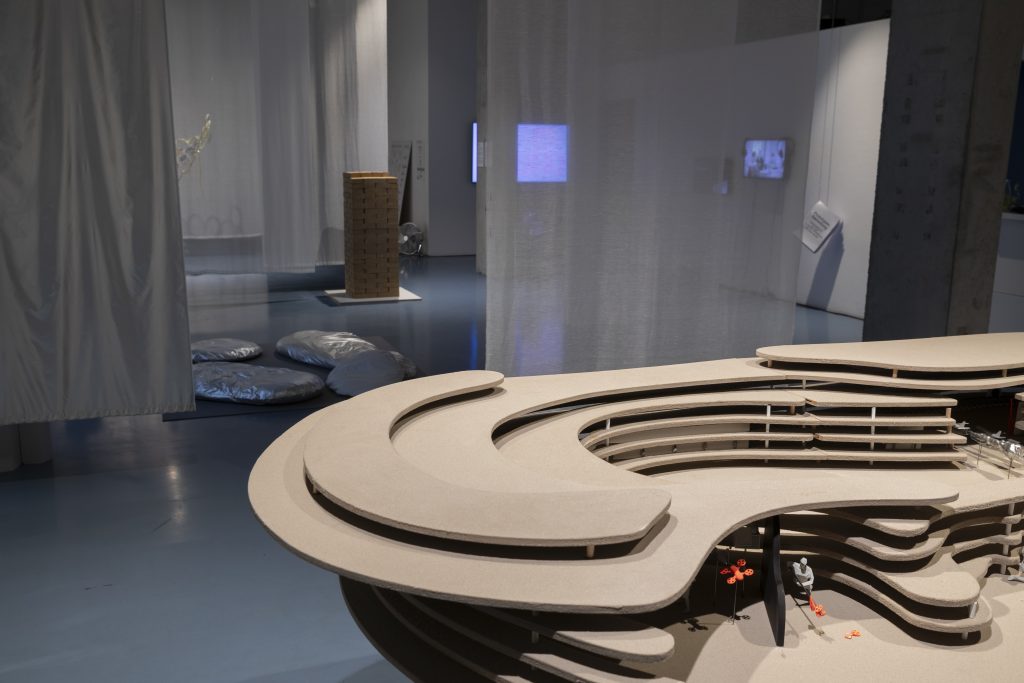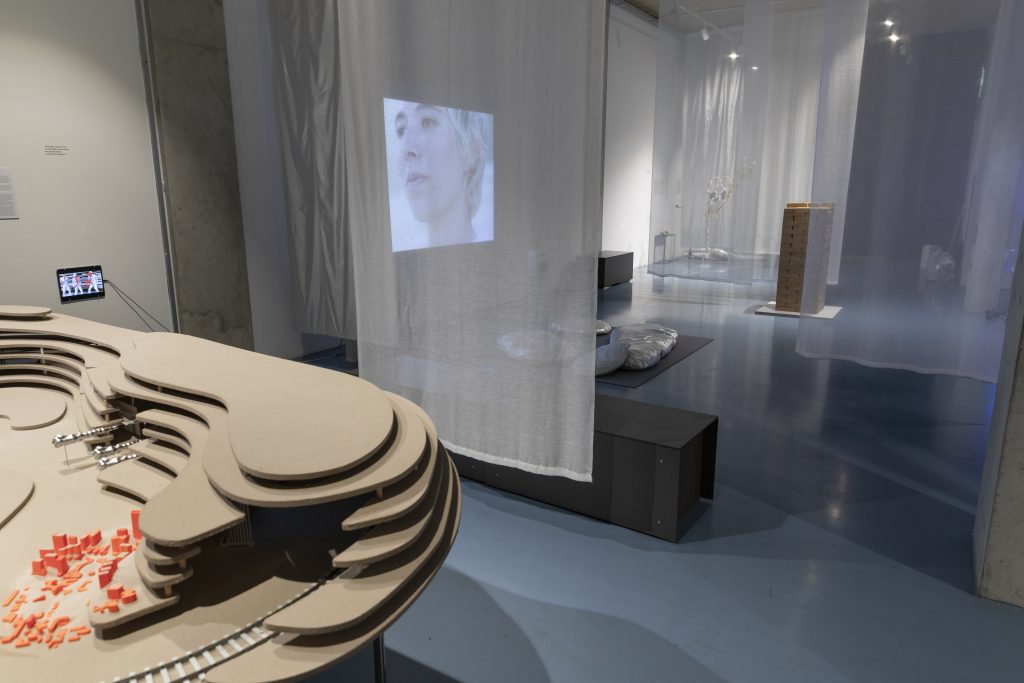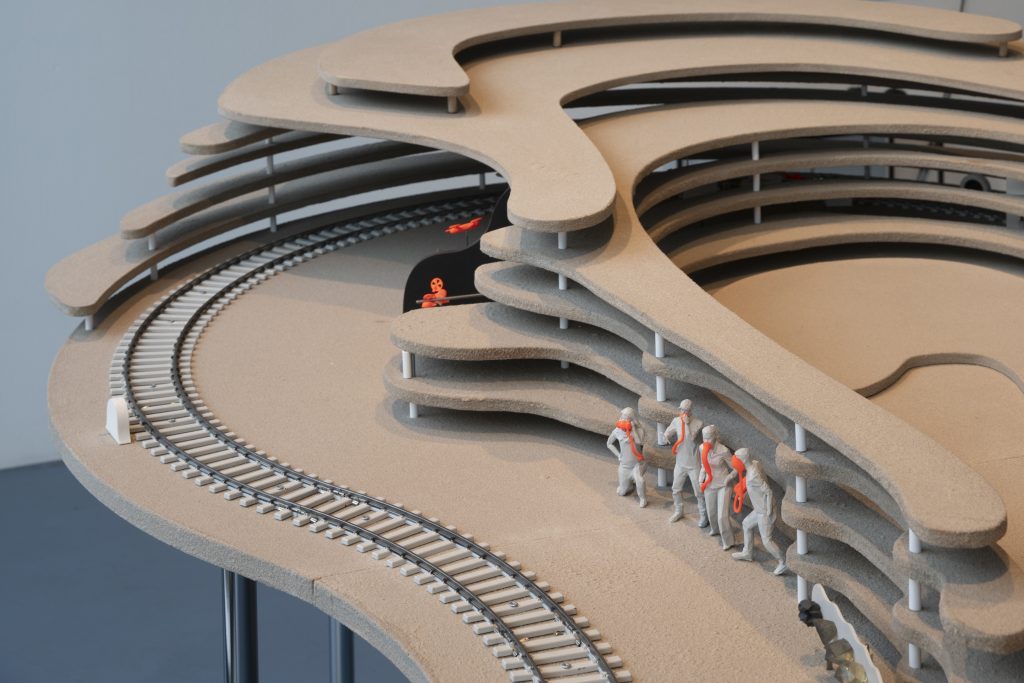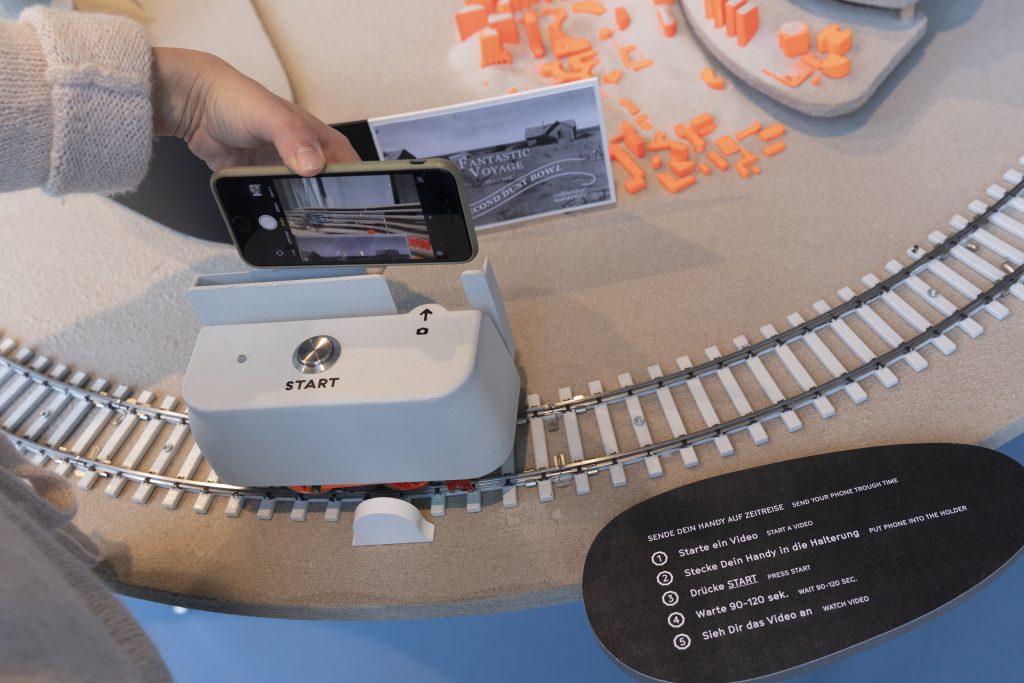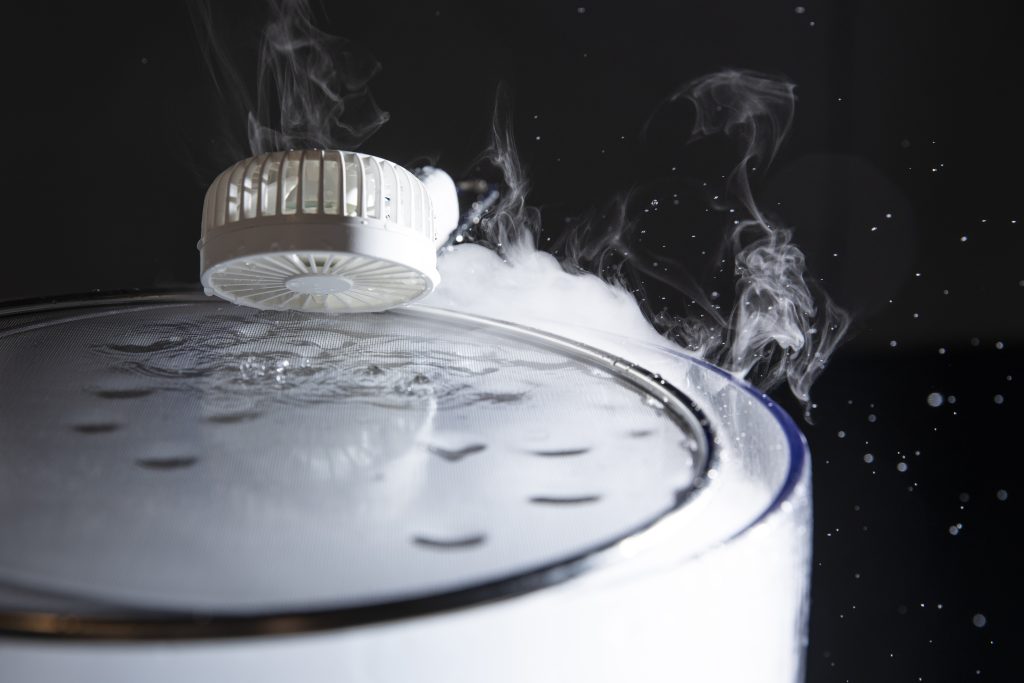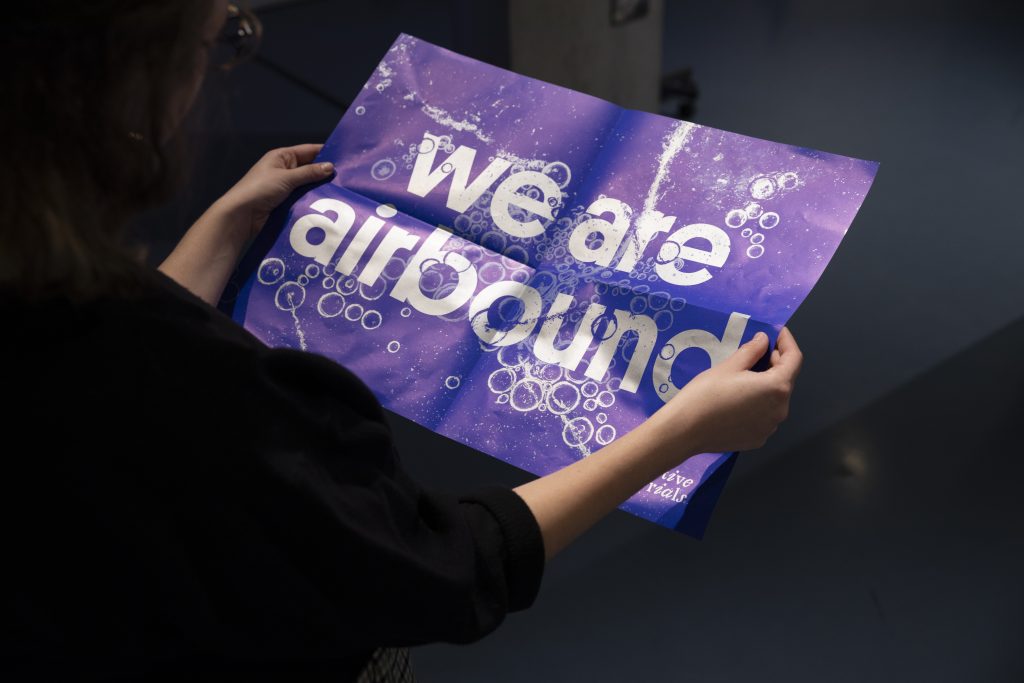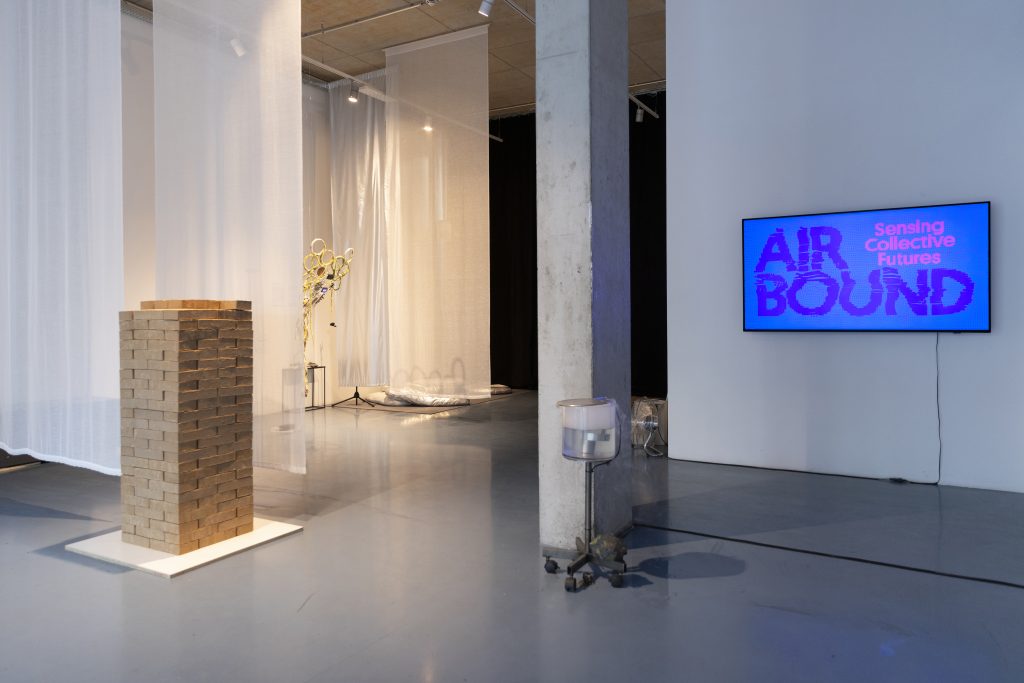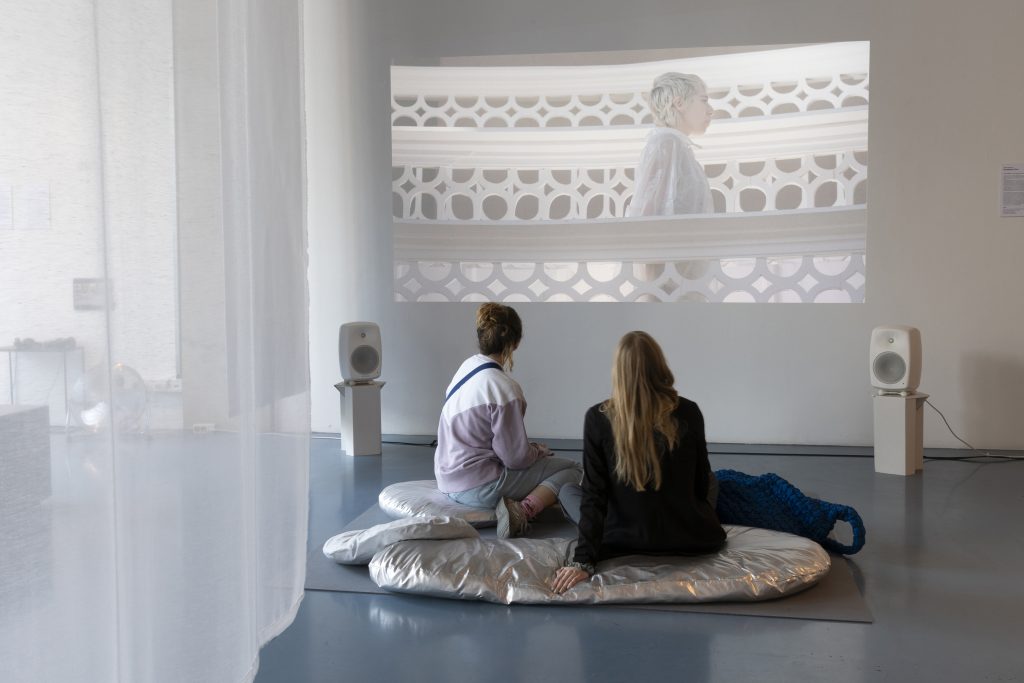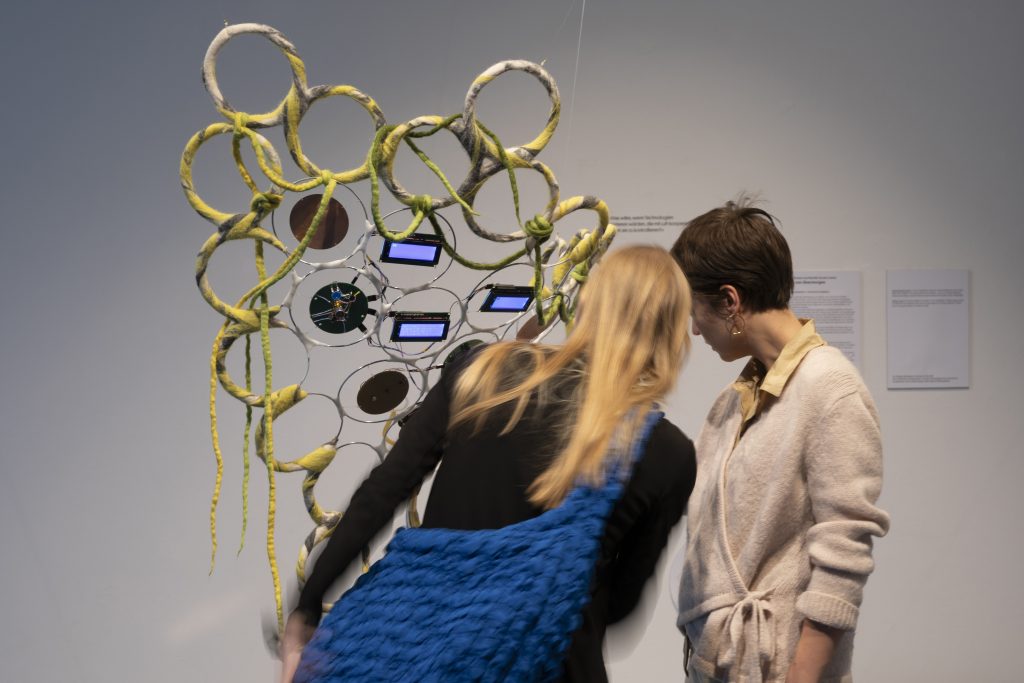Impressions from the Airbound exhibition and finissage
Ubiquitous and yet invisible: Air accompanies us humans daily and is an essential foundation of life. From October 20 to November 9, 2023, the exhibition “AIRBOUND. Sensing Collective Futures” offered a new perspective on air as a material, a connecting social element, and a decisive space for negotiating futures. Curated by the Co-Design project CollActive Materials.
Connected through air
Air is a material that will play a fundamental role in determining which futures become possible for us as humans. May important concerns are at stake: the debate on climate change, the destructive use of resources, and related ecological and social injustices. “We believe that air will be the decisive material in the Anthropocene,” says Martin Müller, cultural scientist and researcher at Cluster of Excellence Matters of Activity. Together with Léa Perraudin (Media Studies, HU/ Matters of Activity), they are leading the BUA project CollActive Materials, and have curated the exhibition “AIRBOUND. Sensing Collective Futures” exhibition.
What if… air behaves differently in the future?
The goal of the exhibition was to create opportunities for visitors to reflect on the role of air in their current and future daily lives. Approximately 650 visitors admired snapshots from the cultural history of air, site-specific experimental setups in the exhibition space, and speculative scenarios. These scenarios explored questions such as: What would a climate future look like in which survival is only possible through technological interventions on the weather? How would people come together in a future without clean air? What if urban coexistence is shaped by new forms of cooperation with air?
Future scenarios at the intersection of society, design, and research
These scenarios and stories of possible futures stem from a long-term design process carried out this year by the BUA-funded project CollActive Materials, involving individuals from civil society, design, and research. The ‘Experimental Laboratory for Science Communication’ CollActive Materials explores the extent to which speculative design can enable a new mode of interaction between science and society. Through speculation, conversations on an equal footing become possible in an entirely new and unique way: everyday and academic knowledge, personal experiences, and current research topics complement each other. The scenarios that arise from speculation, in turn, provide a materialized basis for exchange, discussion, and negotiation. In the spirit of “Design for Debate”: Do we want to live in these futures?
The foundations of the exhibited future scenarios were developed in three full-day workshops in the spring of 2023. Researchers from the Excellence Clusters Matters of Activity and Science of Intelligence, as well as other guests, provided insights from science that the participating individuals used for their speculations. Based on the results, designers and artists ultimately created the interactive exhibits that were experienced in AIRBOUND. The contributing designers included Valerian Blos, Lena Böckmann & Rodolfo Acosta Castro, Monika Dorniak, Gosia Lehmann, and HU Design researcher Clemens Winkler. The exhibition design was developed by Mina Mahouti. The accompanying workshop program was curated by science communicators Kristin Werner and Antje Nestler.
From university to urban society
“It was particularly important for us to move out of the university premises into the city, thereby facilitating an open exchange,” explains Léa Perraudin. “For such collaborative and experimental design processes, there is still a lack of role models in the academic context.” This project’s fundamental approach was also reflected on-site: With a ground-level window front, the exhibition invited passengers to take a look and contribute their own thoughts on the growing exhibition – right at Moritzplatz in Berlin-Kreuzberg.
A crucial partner in this endeavor was once again the Berlin Science Week. Within its framework, a speculation workshop took place with interested participants at the Berlin Science Week CAMPUS in the Museum für Naturkunde, along with a successful Finissage of the “Airbound” exhibition featuring a participatory performance by the Leipzig artist Doris Dziersk.
